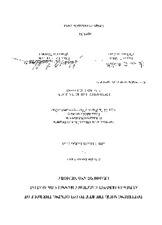| dc.creator | Lukauskis, Kris Cheryl | |
| dc.date.accessioned | 2013-02-22T20:42:03Z | |
| dc.date.available | 2013-02-22T20:42:03Z | |
| dc.date.created | 2001 | |
| dc.date.issued | 2013-02-22 | |
| dc.identifier.uri | https://hdl.handle.net/1969.1/ETD-TAMU-2001-Fellows-Thesis-L95 | |
| dc.description | Due to the character of the original source materials and the nature of batch digitization, quality control issues may be present in this document. Please report any quality issues you encounter to digital@library.tamu.edu, referencing the URI of the item. | en |
| dc.description | Includes bibliographical references (leaves 20-21). | en |
| dc.description.abstract | Tottering mice have a mutation in the calcium channel protein, alpha-1A, which decreases calcium entry into neurons through P- and Q-type high-voltage activated calcium ion channels. Because calcium is an important signaling molecule for learning and memory, these mice are appropriate models to study disorders concerning learning and memory. Homozygous tottering (tg/tg) mice exhibit three specific neurological disorders: absence epilepsy, ataxia and paroxysmal dyskinesia. Calcium ions mainly enter neurons through calcium channels that are multisubunit complexes composed of a pore-forming alpha-1 protein subunit and several regulatory subunits. Channels containing alpha-1A subunits (P- and Q-type calcium channels) are highly expressed in the cerebellum, hippocampus, olfactory bulb, cerebral cortex, and thalamus. Since the alpha-1A subunit is found in the hippocampus, and the hippocampus is critical in spatial learning, we postulated that there is a decrease in spatial learning and memory in tottering mice because of the defects in the alpha-1A subunit that they express. However, no investigation of spatial learning has been done on tottering mice. One problem that needed to be considered is that recurring seizures can interfere with learning and daily tasks. Mice in general swim very well. Swimming seems to eliminate the occurrence of absence seizures and the paroxysmal dyskinesia in tottering mice while the mice are swimming. Therefore, using a swimming maze emphasized potential learning deficits and not physical impairments of tottering mice. We compared male, wildtype (+/+; control) and homozygous tottering mice (tg/tg) using the Morris water maze as a spatial learning and memory test. After training, we counted the number of direct swims (DS) toward the region where the platform was located (NE quadrant) in one category, and noted random swims (RS) as well. The results showed 62.5% +/+ and 30.77% tg/tg mice fit the DS/NE category. With this evidence, the low percentage of tg/tg mice in the DS/NE category supports our hypothesis that these calcium channel-deficient mice have reduced spatial learning and memory. | en |
| dc.format.medium | electronic | en |
| dc.format.mimetype | application/pdf | |
| dc.language.iso | en_US | |
| dc.publisher | Texas A&M University | |
| dc.rights | This thesis was part of a retrospective digitization project authorized by the Texas A&M University Libraries in 2008. Copyright remains vested with the author(s). It is the user's responsibility to secure permission from the copyright holder(s) for re-use of the work beyond the provision of Fair Use. | en |
| dc.subject | biomedical science. | en |
| dc.subject | Major biomedical science. | en |
| dc.title | Tottering mice: the key to unlocking the role of alpha-1A subunit calcium channels on spatial learning and memory | en |
| thesis.degree.department | biomedical science | en |
| thesis.degree.discipline | biomedical science | en |
| thesis.degree.name | Fellows Thesis | en |
| thesis.degree.level | Undergraduate | en |
| dc.type.genre | thesis | en |
| dc.type.material | text | en |
| dc.format.digitalOrigin | reformatted digital | en |


